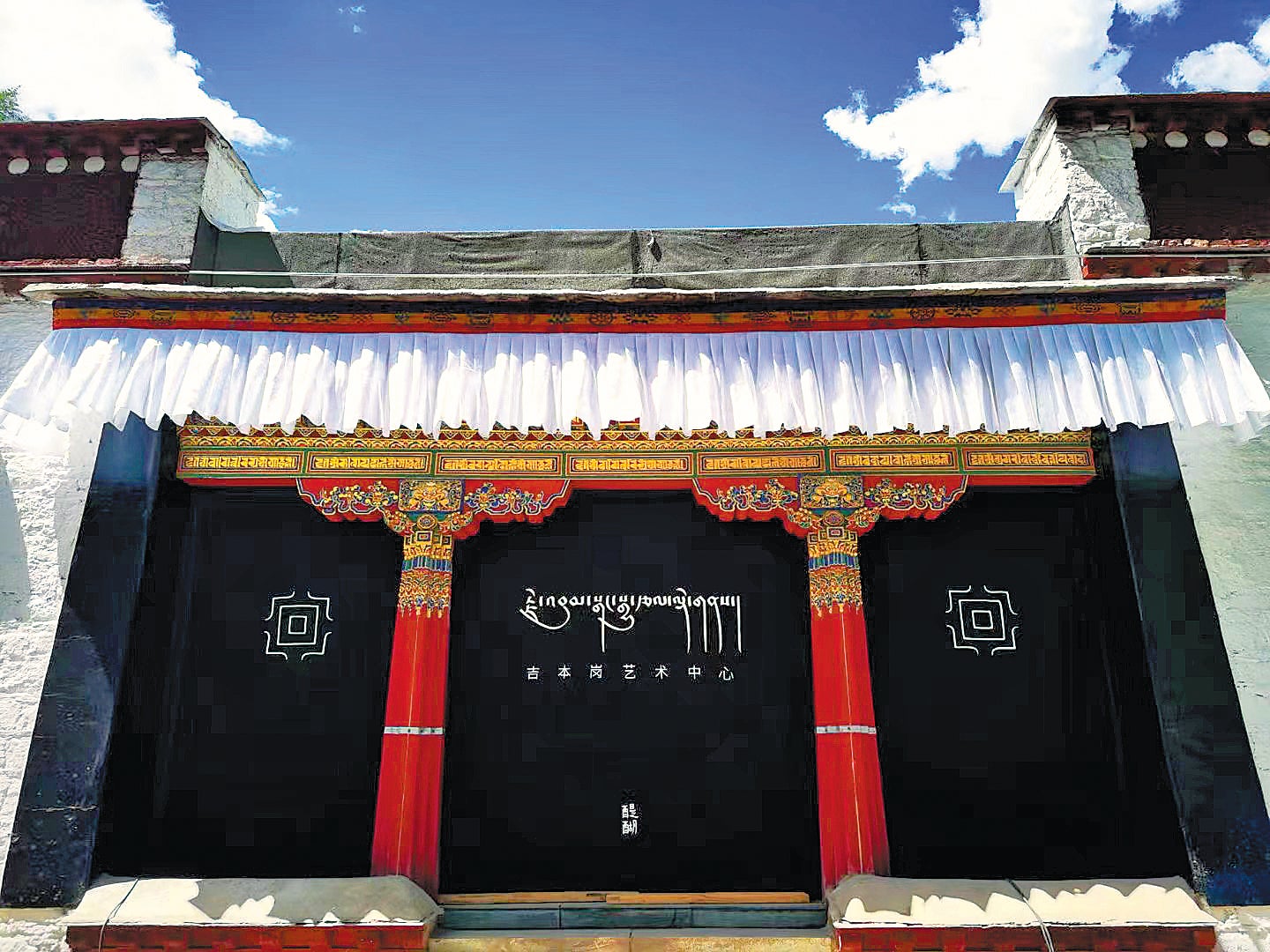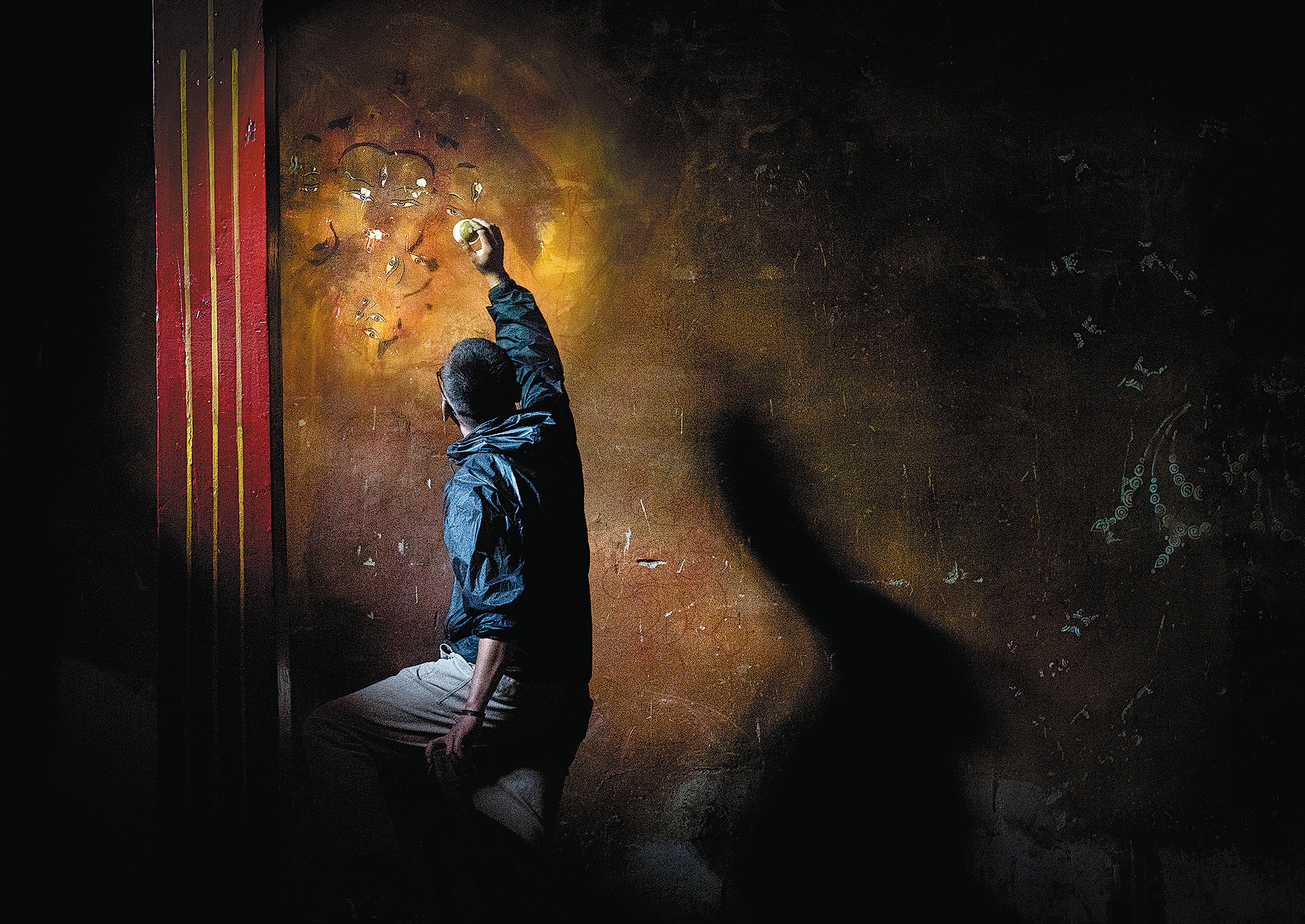Himalayan temple restorer scales new heights
THE ARTICLES ON THESE PAGES ARE PRODUCED BY CHINA DAILY, WHICH TAKES SOLE RESPONSIBILITY FOR THE CONTENTS

Xia Yujun still remembers the first time he laid eyes on the Jebum-gang Lha-khang temple in 2016.
“Pushing open the heavy door, I was greeted by a primitive and rustic atmosphere. The dimness inside the hall added a touch of mystery to the architecture itself,” recalls Jia, who is in his thirties.
“It has a history of approximately 200 years and has murals from the Qing Dynasty [1644-1911],” he adds.
The ancient building’s circular construction, ancient Tibetan pillars and verandas, and layers of weathered, centuries-old murals were among the highlights that hit him between the eyes.
The temple is tucked away in a bustling business street and residential area, 11,975 feet above sea level, in Lhasa, south-west China’s Tibet autonomous region. First built during the second half of the 19th century, it is the only existing mandalic building – a symbolic Buddhist symmetrical structure – in Lhasa.
It was used as a granary for decades, and it is now a popular place among visitors in pursuit of modern art, thanks to five years of efforts by Xia and his team.
The top two storeys of the temple were derelict when Xia and his team started the restoration.
Many of the paintings of Buddhist figures were blurry and traces of fire from when the building was burned could be seen on some carved wooden decorations.
In 2015, the local government decided to bring in a group of architects, artists and scholars to restore the ancient building. Xia says he got off to a rough start, since there was no precedent to follow.
“I probably looked at around 30,000 old photos,” Xia says. “Only by clarifying everything, from the underlying logical relationships to historical heritage and spatial logic, can we have top-level design,” he explains.
After the basics of the temple were restored, Xia’s team conducted extensive investigations before adding some new functions to make it an art space, without altering the original structure or the spatial flow. The goal was to bring it back to life, Xia says.

To transform Jebum-gang Lha-khang into a modern art space, significant improvements were needed, including to its electrical, waterproofing and security systems.
Xia and his team have also created a modern corridor made up of 2,000 copper plates, with patterns crafted by local coppersmiths, to have people feel the fusion and collision of tradition and contemporary art from the moment they step into the art centre.
Xiao Su from Sichuan province has visited the art centre several times. “It was all a mundane affair with the loud pedlars outside the walls, while there was a beautiful and stunning mural art world inside,” Xiao says. “I also love the art centre because it has done a great job handling space, light, artworks and their relations with humans,” she adds.
The museum has been open to the public for two years and has packed in visitors on a weekly basis, Xia says. “Seeing it go from a decrepit ancient building into a popular site with so many people, I feel very accomplished,” he adds.
Xia has been fascinated by ancient architecture since childhood. He grew up around the classic Chinese gardens and museums in Suzhou, Jiangsu province. His parents sent him to a local calligrapher’s workshop to learn painting in his teenage years. After finishing a degree in architectural design at the Sichuan Fine Arts Institute in Chongqing in 2013, Xia furthered his studies of Himalayan regional architecture at Birmingham City University in the United Kingdom, before going back to work in Shanghai after graduation in 2015.
He was approached to help restore ancient buildings in Tibet for his expertise in the field.
Fascination for Himalayan buildings and Tibetan culture had Xia embark on a new journey to Tibet in 2016.
“Ancient architecture in Tibet is not merely three-dimensional in the eyes of an architect. It’s 5D and even 6D, because they have scent, sound, a sense of light and history,” Xia says, adding that only when people delve into local clusters of ancient architecture can they truly communicate with these ancient buildings, including magnificent palaces and solemn temples.
